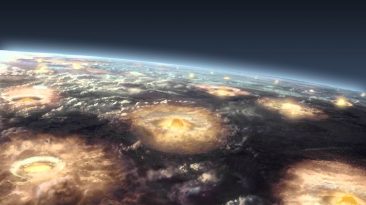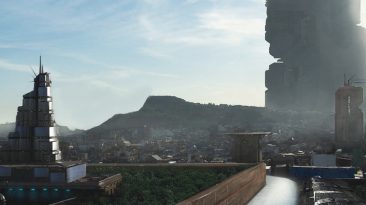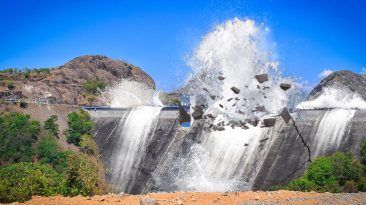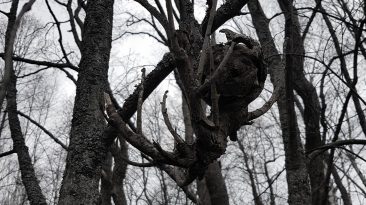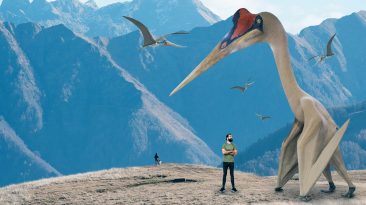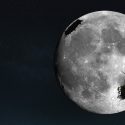Imagine if you could take in all of human history in the blink of an eye. Well, from the first steps on the moon to the first steps out of the slime, that’s exactly what we are in cosmic terms. But in that short amount of time, we have done quite a bit.
If you could travel through time, you could witness the rise and fall of the many species that existed long before we were here. What would you see if you traveled one billion years into the past?
Did Earth ever look like a giant slushball? How far back would you have to go to see the first humans? And, are we already going extinct?
In a sense, we’re all time travelers. We travel into the future at the rate of one second per second. But if you want to go backward in time, you’ll need to go faster than the speed of light.
That’s according to Einstein. Or maybe your time machine could jump through wormholes, a hypothetical tunnel that connects two different points in space-time.
However you decide to travel through the jumbled mess of time, you’ll see the effects and then the causes of the most powerful forces that shaped our world. With one catastrophe after another, you might leave wondering, how many times did the Earth freeze?
As you watch history unfold, or refold, or whatever, you might be surprised at the toll humanity has taken on this planet in such a short amount of time. If you start in 2021 and move backward, you would watch the sixth mass extinction event happening right now.
Known as the Holocene extinction, we are currently living through one of the most destructive periods of our time, caused by human activity. As humans destroy coral reefs and rainforests, the numerous wildlife and plants that depend on these ecosystems die with them.
According to the International Union for Conservation of Nature, 67% of endangered species could be extinct in 100 years. And since most of these extinctions are undocumented, we won’t even know about what we’ve lost until it’s gone. Maybe not even then.
Visit the 18th and 19th centuries, and you could watch the pollution created by the Industrial Revolution reversed back into the smokestacks. Cities would shrink down and return their roots as rural farmlands.
While this would let you see the explosion of the human race in terms of population and pollution, if you want to retrace our first steps, you’ll need to go back farther. Tour the planet 200,000 years ago, and you would witness the arrival of our species, the homo sapiens.
Jump back 7 million years to Northern Chad, and the oldest known species of humans could stroll right by you. Known as the Sahelanthropus tchadensis, this mysterious link in our chain looked ape-like but was the first to walk upright. He seems friendly enough. But could you survive if you went even further back in time?
Travel to 60 million years ago, and you’ll see the first primates emerge from the humid rainforests of Asia. With skeletons weighing under 30 g (1 oz), these early primates evolved into us.
Step back to 65 million years ago, and you’d find yourself under the giant asteroid that created a global extinction event. The impact caused a tsunami and filled the air with dust and debris. The crash also set off massive volcanic eruptions across the world. With the Sun blacked out and the land flooding, the last of the dinosaurs died out. But without this event, mammals like us may have never taken over the planet.
Go back 130 million years, and you’ll see the first flowers bloom. It took hundreds of millions of years to get plant life to evolve into this form. This is the last you’ll see of them, so enjoy this moment.
As you travel 200 million years back in time, you’ll witness the breakup of Pangea, the mass of land that will become the continents. As the land breaks apart, the lava eruptions will be so massive they kill almost 80% of the species on Earth. But the dinosaurs wouldn’t have had the chance to evolve into the giant creatures we learned about without this event.
Keep going back another 20 million years, and you could watch the first early mammals, small and nocturnal, crawl around in the dark. And if you go back to 230 million years ago, you could watch the early dinosaurs walk for the first time on two legs.
Before that can happen, though, the Earth has to go through what would be known as the Great Dying, also called the Permian extinction. While scientists argue whether this lasted over millions of years or a few hundred thousand, the result was that 95% of all species on Earth died.
But as devastating as it would be to watch everything fall apart if you went back 300 million years, you could also watch the Earth’s landmasses come together to form Pangea. Now you could take a walk from Argentina to China. Zip back 20 million years before this, and you’ll run into the first reptiles, which evolved from amphibians.
But things get interesting around 375 million years ago. You would watch marine animals walking onto land for the first time. Maybe you would see a Tiktaalik, which looks like a salamander mixed with a fish. This strange creature would later evolve into mammals and amphibians.
But just like every species you saw before, this growth doesn’t happen without a cost. And now we’re at the first extinction event. The Ordovician extinction occurs when ice sheets spread from the polar caps into the oceans.
Almost 70% of all sea life died off during this planet-wide freeze over 460 million years ago. Keep going back, and you could see how life started underwater. Called the Cambrian Explosion, the small sea creatures born during this age were part of the greatest evolutionary event on our planet. The lineage of most of our species on our planet today can be traced back to this milestone.
But scientists are still unsure how this unique event happened. Between 635 and 850 million years ago, the Earth froze over twice. Once for almost 60 million years, and the next time for 15 million years. One theory suggests that the Earth was only covered in a thin film of ice, allowing the Sun’s rays to seep through and plant the seeds of life below.
But even after all the wonders of life you’ve just witnessed, nothing can prepare you for what’s next. Go back one billion years in history, and you’ll be surprised to find, well, not a lot. During this time, red algae are forming spores to reproduce. Cells are coming together to form larger organisms. And 4.5 billion years in Earth’s past, life on Earth is microscopic and not very threatening.
But over the 4.5 billion years of history you’ve just witnessed, nothing has been more vicious to our planet in such a short amount of time as humans. While five extinction events happened and took millions of years, nothing has been as destructive as our presence on this planet.
But maybe humans will set things right, eventually. While we can predict the outcome of the events we’re causing, there could be a change in our planet, or our hearts, that might set our future on a different path.
Sources
- “Cryogenian Period | Geochronology”. 2021. Encyclopedia Britannica.
- “The Cambrian Explosion”. 2021. evolution.berkeley.edu.
- “The Great Ordovician Biodiversification Event (GOBE): The Palaeoecological Dimension”. Servais, Thomas, Alan W. Owen, David A.T. Harper, Björn Kröger, and Axel Munnecke. 2010. Palaeogeography, Palaeoclimatology, Palaeoecology 294 (3-4): 99-119. doi:10.1016/j.palaeo.2010.05.031.
- “First land plants plunged Earth into ice age”. Marshall, Michael. 2021.New Scientist.
- “Here we go again: Earth’s major ‘mass extinctions'”. 2021. phys.org.
- “Discover Pangea: The Landmass That Once Dominated The Planet”. 2021. Thoughtco.












